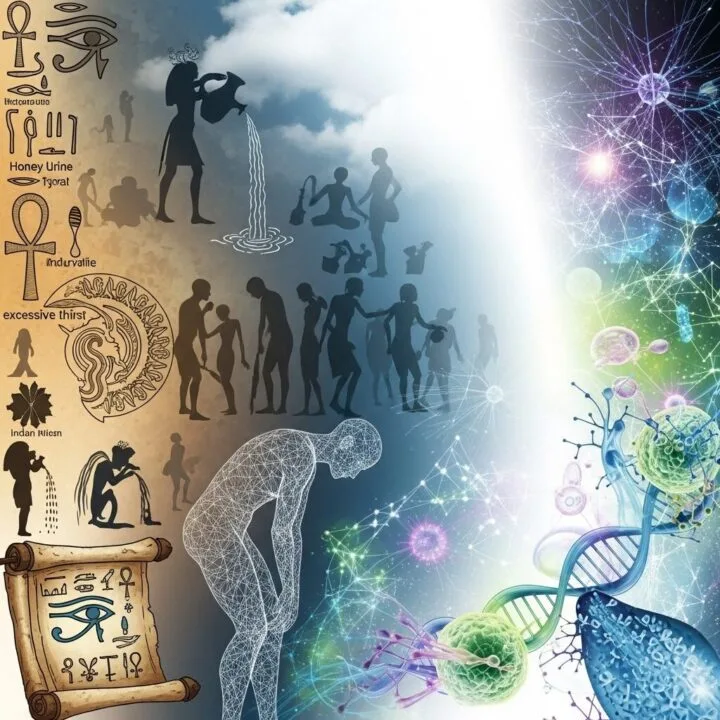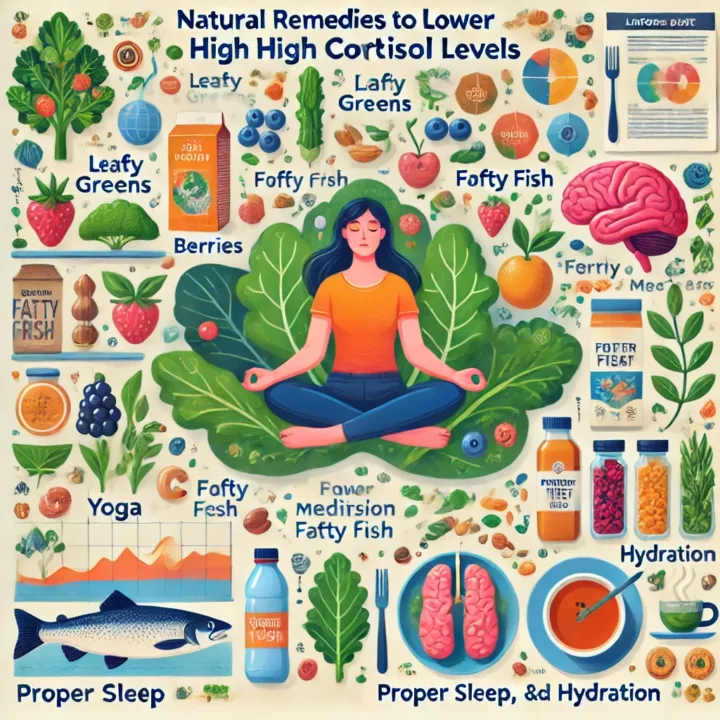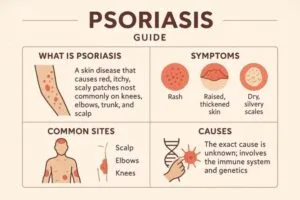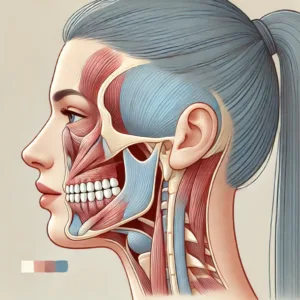Type 1 Diabetes: What It Is, How It Changed
Table of Contents
Type 1 Diabetes: What It Is, How It Changed, and What’s Ahead
Living with Type 1 Diabetes often means confronting challenges head-on, an ongoing battle against something few truly comprehend. People often wonder what it means for daily life, how past generations coped, and what progress medical science brings. I often hear questions about what this condition truly is, what the future holds for those affected, or how everyday existence adapts to constant vigilance. We will explore how this condition affects someone, its origin story, and where research points for tomorrow.
More Than Just “Sugar Sickness”: Identifying Type 1 Diabetes
The initial perception frequently misjudges Type 1 Diabetes as simply a “sugar sickness,” a casual dietary consequence, which it absolutely is not. The fundamental truth points elsewhere: this is an autoimmune condition. Your immune system, normally a guardian, begins to misunderstand. It misidentifies and then assaults the very cells responsible for creating insulin within your pancreas. These are the beta cells; without their proper function, a critical hormone is absent. Without insulin, sugar cannot enter your body’s cells, leaving energy sources stranded in the bloodstream, leading to blood sugar levels that climb.
It remains vital for everyone to absorb this: no amount of candy, no lifestyle choices, no dietary indulgences bring on Type 1 Diabetes. It results from a fight internal to the body, a cellular civil war, not a moral failing or caloric excess. This condition can emerge at any point in life, a sudden intrusion, though diagnosis often arrives during childhood or teenage years.
What tells you something is wrong? Signs appear, signals the body sends when metabolic equilibrium shatters.
- Sudden Thirst: An insistent, unquenchable craving for liquids. You drink, yet thirst persists.
- Frequent Urination: Bathroom visits become unusually common, even bed-wetting for children previously toilet-trained. Your kidneys attempt to expel excess sugar.
- Constant Hunger: Despite eating, a gnawing emptiness persists. Cells starve, deprived of glucose energy.
- Unexplained Weight Loss: Pounds drop without effort or intention. The body consumes its fat and muscle for fuel.
- Persistent Tiredness: Energy drains away. A perpetual exhaustion settles in.
- Blurry Vision: High blood sugar affects eye lenses, vision blurring, focusing a struggle.
- Fruity-Smelling Breath: This particular aroma, resembling nail polish remover, may signal a severe complication, diabetic ketoacidosis (DKA), a medical emergency.
These indicators, when present, demand attention, a quick consultation with a healthcare professional becoming an imperative. Early identification holds significant weight for subsequent well-being and management of Type 1 Diabetes.
A Traverse Through Time: The Story of Type 1 Diabetes
Imagine observing a condition where people passed through liquids constantly, their urine tasting sweet. Such observations trace back to ancient Egyptians and Indians, millennia past, where the condition was known as “honey urine.” The ancient Greeks later coined the term “diabetes,” meaning “to pass through,” an apt label for the ceaseless urination.
Before the epoch-making discovery of insulin, a diagnosis for Type 1 Diabetes essentially sealed one’s fate. Children diagnosed faced about a year of life, a grim prospect. People then attempted extreme diets, often prolonged fasting and severe calorie restriction, which simply led to another form of suffering: starvation. This was the landscape of desperation.
Then, a pivotal moment: 1921. Banting, Best, Macleod, and Collip stepped forward, their work leading to the discovery of insulin. This moment reshaped everything. Type 1 Diabetes transformed from a swift, deadly affliction to a manageable one. Think of Leonard Thompson, a 14-year-old boy in 1922, the first human recipient of purified insulin. His life, poised for tragic brevity, was spared.
The progression since then has been a relentless march. From the first insulin pumps and synthetic “human” insulin in the mid-20th century to the HbA1c test and continuous glucose monitors (CGMs) by the late 1990s, innovation has not ceased. Just in 2022, Tzield™ arrived, the first therapy capable of delaying the onset of 1 Diabetes in those at risk. These strides, each built upon its predecessor, offer tangible hope.
I recall a conversation with Sarah, whose grandmother was diagnosed in the 1930s. “She told me stories of constant hunger, of her parents measuring every bite, dreading when her sugar levels would spike or plummet. She survived on sheer will until insulin became accessible. It sounds like a different world.” Her testimony illustrates the profound shift in quality of life for those with Type 1 Diabetes.

Living with Type 1 Diabetes Today: Empowering Technology and Personalized Care
Type 1 Diabetes requires ongoing vigilance, a dynamic dance with blood sugar regulation. My experience tells me that understanding the tools available makes a world of difference. Lifelong insulin therapy forms the bedrock. Whether through daily injections with pens or syringes or an insulin pump delivering continuous, minute doses, insulin remains paramount.
For many, daily living has found a new rhythm with technology. Continuous Glucose Monitors (CGMs) have become invaluable companions. These devices provide real-time glucose data, offering immediate insight into trends. Imagine seeing your sugar levels ebb and flow minute by minute, allowing prompt adjustments. This level of oversight has revolutionized personal management. As one person told me, “My CGM is like having a co-pilot; it helps me anticipate changes before they become problems.”
Automated insulin delivery systems, often called hybrid closed-loop systems or “artificial pancreases,” signify a significant leap. They link CGMs and insulin pumps, an algorithm acting as the conductor, automatically adjusting insulin delivery. This drastically reduces the mental load, a welcome relief from constant calculations. The progress in managing Type 1 Diabetes has been nothing short of transformative.
Personalized care guides treatment. My A1C goals, a measure of average blood sugar over several months, will differ from yours, reflecting individual needs, age, and existing health factors. It’s not a one-size-fits-all approach. The support system extends beyond medication. You will collaborate with a healthcare team on healthy eating—carb counting becomes a vital skill—regular physical activity, and learning how to manage high and low blood sugar. This holistic approach ensures comprehensive care for Type 1 Diabetes.
The emotional and psychological impact of this condition warrants its own space. Current guidelines rightly emphasize psychosocial support to manage “diabetes distress,” the ongoing anxiety and burden associated with chronic illness. We recognize the unseen load; addressing it is part of effective management. If you feel overwhelmed, resources are there. Seeking help is a strength, not a weakness.
Persistent Inquiries and Public Dialogues in Type 1 Diabetes
The scientific community, ever inquisitive, still ponders certain fundamental questions regarding Type 1 Diabetes. A core debate revolves around disease progression: are immune cells the primary orchestrators of destruction, or do the beta cells themselves initiate a self-destructive process, subsequently attracting immune attack? This remains a scientific chicken-or-egg scenario, its resolution potentially unlocking new therapeutic paths.
Whispers of certain insulin analogs increasing cancer risk surfaced some years ago. While initial studies hinted at this, the broader scientific view questioned these findings, often citing limitations in study design or duration. These concerns have largely receded, yet they highlight the ongoing scrutiny new therapies endure. The pursuit of safety parallels the quest for efficacy in Type 1 Diabetes treatment.
What, precisely, constitutes a “cure” for Type 1 Diabetes? And how close are we? This question fuels constant dialogue, with some experts exhibiting more optimism than others regarding a fully automated artificial pancreas as the ultimate solution. Its arrival, many believe, is a matter of when, not if.
One of the most insidious struggles is stigma. The widespread misconception that Type 1 Diabetes results from diet or sugar consumption persists. This misinformation breeds unfair judgment, affecting emotional well-being and even management behaviors. Consider children facing judgment from peers or adults enduring dismissive comments. This societal burden is real, often unseen.
Access to life-changing technology also sparks vital discussion. Despite incredible advancements, equitable access to CGMs and insulin pumps remains a challenge. Socioeconomic status or background should not dictate health outcomes, yet these disparities exist. Ensuring everyone can access advanced tools for Type 1 Diabetes management is a priority.
There is also a recognized, often understated, association between Type 1 Diabetes and disordered eating patterns, sometimes called “diabulimia.” This intersection represents a critical area requiring expanded understanding and robust support systems. Addressing both conditions concurrently yields improved outcomes.
A Glimpse into Tomorrow: What the Future Holds for Type 1 Diabetes
The future of Type 1 Diabetes care and possible remission sparkles with exciting prospects, born from intense research and innovative thinking. I see the horizon shifting, new possibilities emerging.
- Stem Cells to the Rescue: This avenue holds immense promise. Researchers are working to transform stem cells into entirely new, functional insulin-producing beta cells. The ultimate aspiration involves transplanting these into individuals with Type 1 Diabetes, potentially restoring the body’s intrinsic ability to manufacture its own insulin. Some participants in early trials have already experienced remarkable outcomes, reducing or even discontinuing insulin injections.
- Immune System Retraining: New immunotherapies, like Tzield, focus on modulating the immune system, calming its misdirected assault on beta cells. These treatments aim to preserve existing cells and delay disease progression. Many more such therapies are under development, designed to intervene at the autoimmune root of Type 1 Diabetes.
- Smarter Technology: Expect artificial pancreas systems to evolve, becoming even more automated, intuitive, and seamlessly integrated into daily life. Future systems might incorporate advanced artificial intelligence for even more precise blood sugar regulation, perhaps even dual-hormone systems that administer both insulin and glucagon, optimizing control further.
- Protecting Transplanted Cells: Scientists explore “encapsulation” strategies. This involves encasing insulin-producing cells within a protective barrier, shielding them from immune attack. This advancement could eliminate the need for powerful immunosuppressant medications after cell transplantation.
- “Smart” Insulin: Imagine a “glucose-sensing insulin” that autonomously releases insulin based on real-time blood sugar fluctuations. This innovative concept aims to mitigate both high and low blood sugar events with a single, potentially once-a-day, injection. While still in nascent stages, the vision is compelling for Type 1 Diabetes management.
- Early Detection Initiatives: Efforts are intensifying to identify Type 1 Diabetes biomarkers long before symptoms manifest. Earlier screening could enable interventions that delay or even prevent the full onset of the condition, minimizing the impact on health.
- Gene Therapy Approaches: This experimental method explores reprogramming other body cells to assume insulin-producing roles, offering a radical new path for metabolic restoration.
- Beyond Insulin: Complementary Medications: New classes of medications, such as SGLT inhibitors or GLP-1 receptor agonists, are under investigation. These could complement insulin therapy, offering additional avenues to improve outcomes and stabilize blood sugar for those with Type 1 Diabetes.
The Ongoing Quest: Future of Hope for Type 1 Diabetes Management
From ancient observations of “honey urine” to the cutting-edge science shaping today’s treatments, the narrative of Type 1 Diabetes is a testament to human perseverance and ingenuity. While a definitive cure remains the ultimate pursuit, the relentless pace of research—especially in areas like stem cell therapies, immunotherapies, and advanced artificial pancreas systems—consistently betters the lives of those affected. Every breakthrough brings us closer to a future where Type 1 Diabetes is prevented, reversed, or perhaps, becomes a concern of the past. The commitment to finding transformative solutions for Type 1 Diabetes continues, an unyielding promise to future generations.
Learn more and support research:Visit Breakthrough T1D













Post Comment